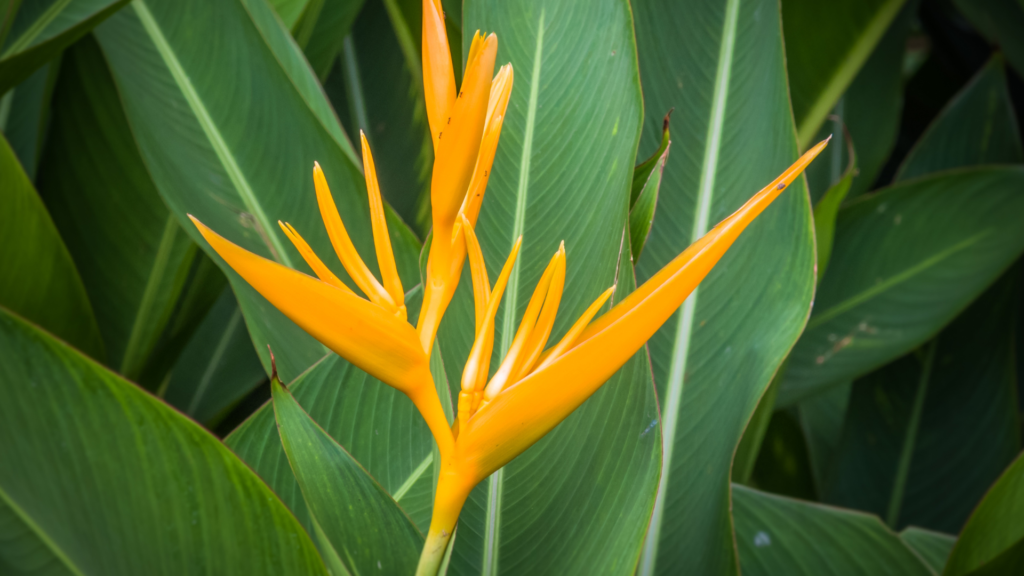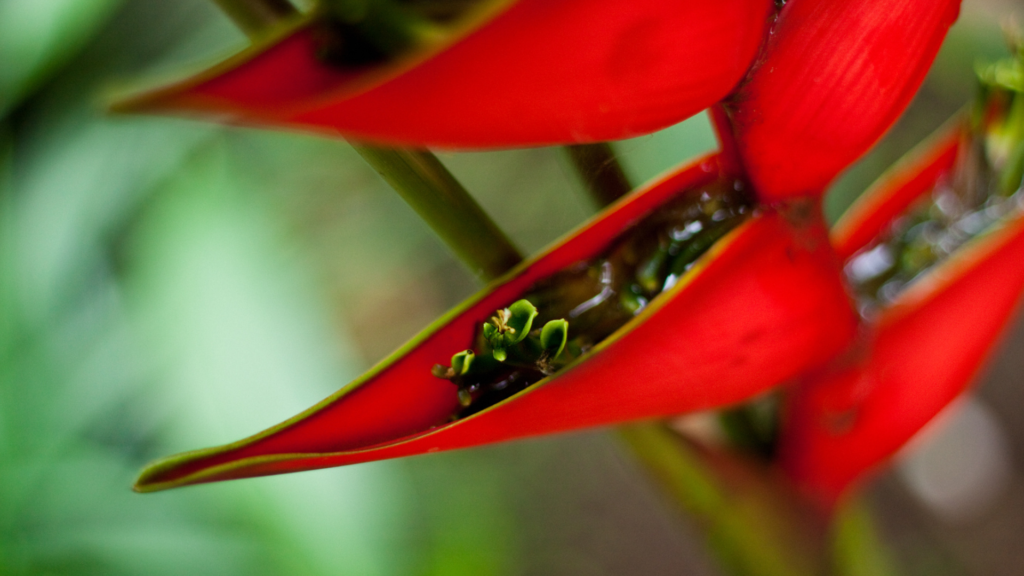Costa Rica is undoubtedly a place where one can find incredible diversity in flora. All the plants are magnificent and beautiful representatives of the beauty of this earthly paradise.
One of the most beautiful plants found there, but somewhat unique in appearance, with its original shape, is the Heliconia. This exotic plant also brightens up the tropical forests and gardens of other countries such as Panama with its vibrant colors and unique shape.
You cannot miss it during your travels, as this vigorous tropical plant has long stems on which are found long, colored, and waxy bracts (modified leaves) of a rather unusual structure. It presents us with lobster claws arranged on either side, in which very small and discreet tropical flowers are found.
It is important to know that these slender, upward-pointing bracts are filled with nectar. A nectar adored by butterflies, pollinating insects, bats, but especially hummingbirds attracted by their intense color (bright red, orange, and yellow). They are therefore an important food resource for the fauna of Central America.
According to experts, there are species of Heliconias that have coevolved so much with hummingbirds that they have flowers of the exact size of the birds’ beaks. Small frogs like to hide inside the « lobster claw » bracts, as they always retain water, which small birds also like, as they are a good place to hide and a very practical perch.

Around its thick and robust stems, its vivid green foliage is tough and resembles that of the banana tree. These stems often become a refuge for bats that find refuge underneath in groups.
The most common heliconia is the Heliconia Latispatha, which is often found along roadsides or in sunny areas of secondary vegetation. In Costa Rica, there are more than 35 native species of Heliconias, but there are also many exotic hybrids in plantations and gardens. Worldwide, there are about 200 to 250 species of indigenous Heliconias, and most originate from the American tropics.


They are often confused with birds of paradise, but they are not quite the same plants (they are distant cousins; because birds of paradise are arranged very differently and their leaves are thinner and less tough in texture).
Heliconias are indigenous to the moist tropical forests of Costa Rica. You can see them by visiting national parks and natural reserves, particularly in low-altitude areas where the climate is humid.
This tropical beauty is not only amazing to human observers but also play a crucial role in their ecosystem by attracting pollinators like hummingbirds and butterflies, adding dynamic life to their surroundings.
These features collectively contribute to the beauty of the Heliconia, making it a popular choice for ornamental gardening and a fascinating subject for botanists and plant enthusiasts.

- Voyager en sécurité : votre guide essentiel au Costa Rica
- Enhanced Safety in Costa Rica: A New 9-1-1 Center Dedicated to Tourists
- Sécurité renforcée au Costa Rica : un nouveau centre 9-1-1 au service des touristes
- Le costaricien Luis Castillo Briceño, nous parle de son triomphe à la compétition internationale des chefs d’orchestre
- Sergio Gil: Building Dreams for Expats in Costa Rica

